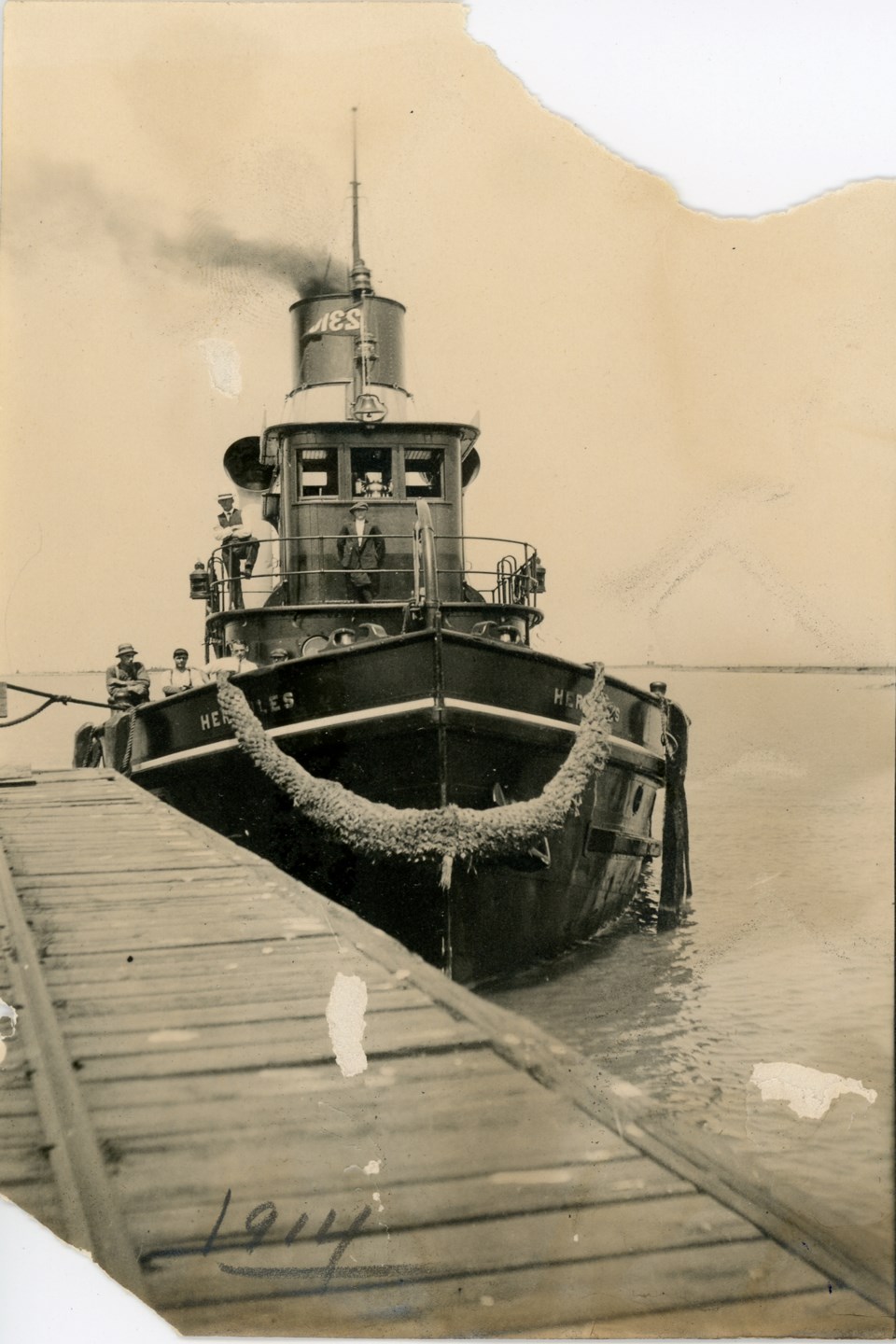You may have noticed a tugboat named the Glen G. docked along Collingwood’s Heritage Drive this summer. For many residents, its presence was a welcome sight and recalled memories of the tugboats that were active during the years of the Collingwood Shipyards operation.
The Hercules (pictured here) is of a similar vintage to the Glen G., the latter having been built in 1909 by the American Shipbuilding Co. in Loraine, Ohio as the Hollis M.
In this week's Remember This photograph, the Hercules is recorded to be docked in Collingwood in 1914. Like many early harbour photographs, the exact location in which this photograph was taken is difficult to determine, especially in the absence of any buildings. A faint, flat shoreline is visible in the background along the full width of the photograph which suggests, if this photograph was indeed taken in Collingwood, the photographer must have been facing in an easterly direction towards the beach shorelines between Wasaga Beach and Balm Beach.
Six men appear aboard the tug, all of whom are casually posed for the photographer. Two appear in front of the wheelhouse, one with his hands crossed and his left foot resting on the rails, and four on the starboard side of the main deck. The tug’s bell is visible at the smokestack’s base. A rope bow fender (or bumper) adorns the tug’s bow.
Hercules was built for the Minister of Public Works by Polson Iron Works in Toronto in 1906, serving as a government tug between 1906 and 1964. During her final six years, she operated under Verreault Navigation, Inc., keeping her original name for her entire 64-year career. The tug was dismantled in 1970.
Remember This is a weekly series of historic photographs submitted by the Collingwood Museum to CollingwoodToday.ca. These photographs were originally collected and documented by the Huron Institute in a historical catalogue entitled Huron Institute Paper and Records: Volume III. Much of Collingwood’s early history has been preserved due to the dedication and foresight of the early museum’s founders, namely its secretary-curator David Williams, upon its establishment in 1904.



